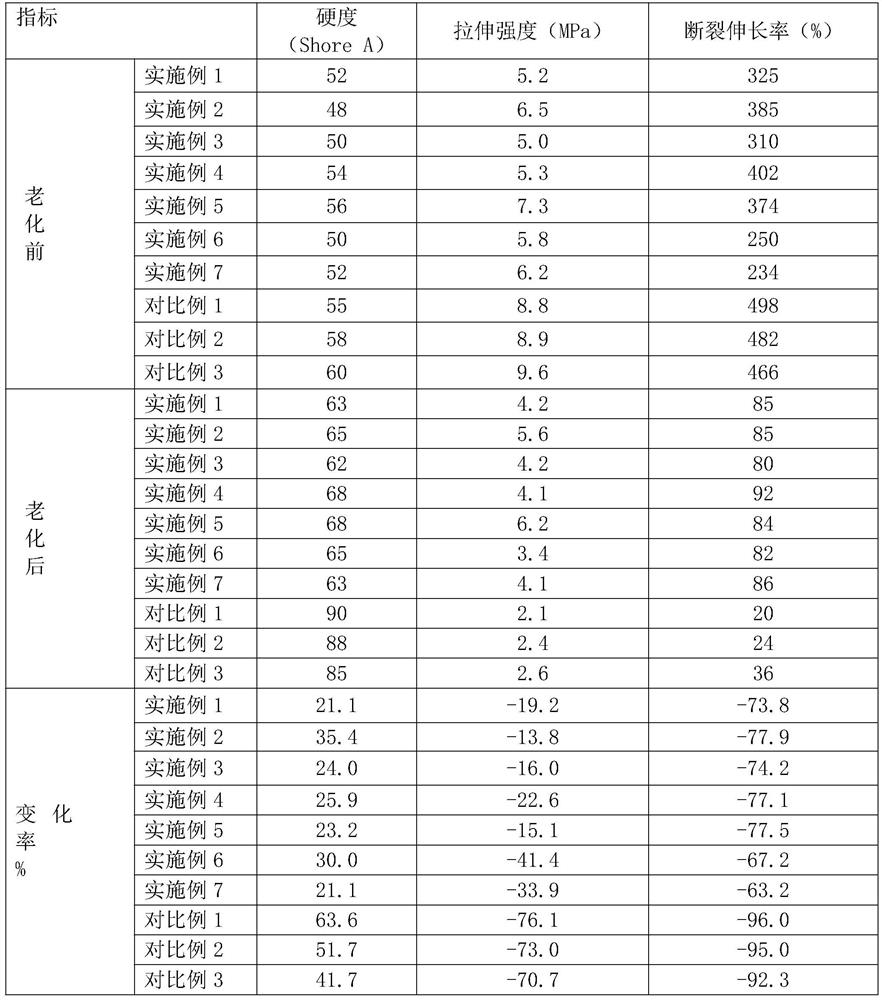A kind of high heat-resistant copolymerized silicone resin and preparation method thereof
A silicone resin and high heat-resistant technology, applied in the field of organic polymer materials, can solve the problems of great hidden dangers in the use of products in high-temperature environments, and achieve high heat resistance, mild reaction conditions, and simple operation
- Summary
- Abstract
- Description
- Claims
- Application Information
AI Technical Summary
Problems solved by technology
Method used
Image
Examples
Embodiment 1
[0032] 200 g of hydroxyl-terminated polydimethylsiloxane (molecular weight 10×10 4 g / mol) and 6.5 g of triethylamine were dissolved in 600 g of toluene at room temperature, and dropped into 125 g of phenyltrichlorosilane for 2 h. After the feeding was completed, the reaction mixture was heated to reflux for 3 hours, then the mixture was cooled to room temperature, mixed with 18.5 g of tetramethyldivinyldisiloxane, and added dropwise to 300 g of tetramethylammonium hydroxide (25% aqueous solution). ) and 250g of water into a strong alkaline solution, dripped for 3h. After the feeding was completed, the temperature was raised to the reflux temperature of the solvent and the reaction was continued for 5 h. After the reaction, the lower water layer was separated, the upper oil layer was washed with water until neutral, dried to remove water, the solvent was evaporated under reduced pressure at 80°C, and the product was continued to be dried at 130°C for 3 hours to obtain 317 g of...
Embodiment 2
[0034] 200 g of hydroxyl-terminated polydimethylsiloxane (molecular weight 5.8×10 5 g / mol) was prepared according to the reaction steps of Example 1 to obtain 310 g of copolymerized silicone resin with a yield of 96%.
Embodiment 3
[0036] 200 g of hydroxyl-terminated polymethylphenylsiloxane (molecular weight 8.5×10 4 g / mol) and 6.5 g of triethylamine were dissolved in 800 g of xylene at room temperature, dropped into 125 g of phenyltrichlorosilane, and dropped in 2 h. After the feeding was completed, the reaction mixture was heated to reflux for 3 h, then the mixture was cooled to room temperature and mixed with 20.6 g of dimethylvinylchlorosilane. Drop into the strong alkali solution made up of 85g KOH and 400g water, and finish dropping in 4h. After the feeding was completed, the temperature was raised to the reflux temperature of the solvent and the reaction was continued for 5 h. After the reaction, the lower water layer was separated, the upper oil layer was washed with water until neutral, dried to remove water, the solvent was evaporated under reduced pressure at 80°C, and the product was further dried at 130°C for 3 hours to obtain 314 g of copolymerized silicone resin with a yield of 97 %.
PUM
| Property | Measurement | Unit |
|---|---|---|
| tensile strength | aaaaa | aaaaa |
| tensile strength | aaaaa | aaaaa |
| elongation at break | aaaaa | aaaaa |
Abstract
Description
Claims
Application Information
 Login to View More
Login to View More - R&D Engineer
- R&D Manager
- IP Professional
- Industry Leading Data Capabilities
- Powerful AI technology
- Patent DNA Extraction
Browse by: Latest US Patents, China's latest patents, Technical Efficacy Thesaurus, Application Domain, Technology Topic, Popular Technical Reports.
© 2024 PatSnap. All rights reserved.Legal|Privacy policy|Modern Slavery Act Transparency Statement|Sitemap|About US| Contact US: help@patsnap.com









